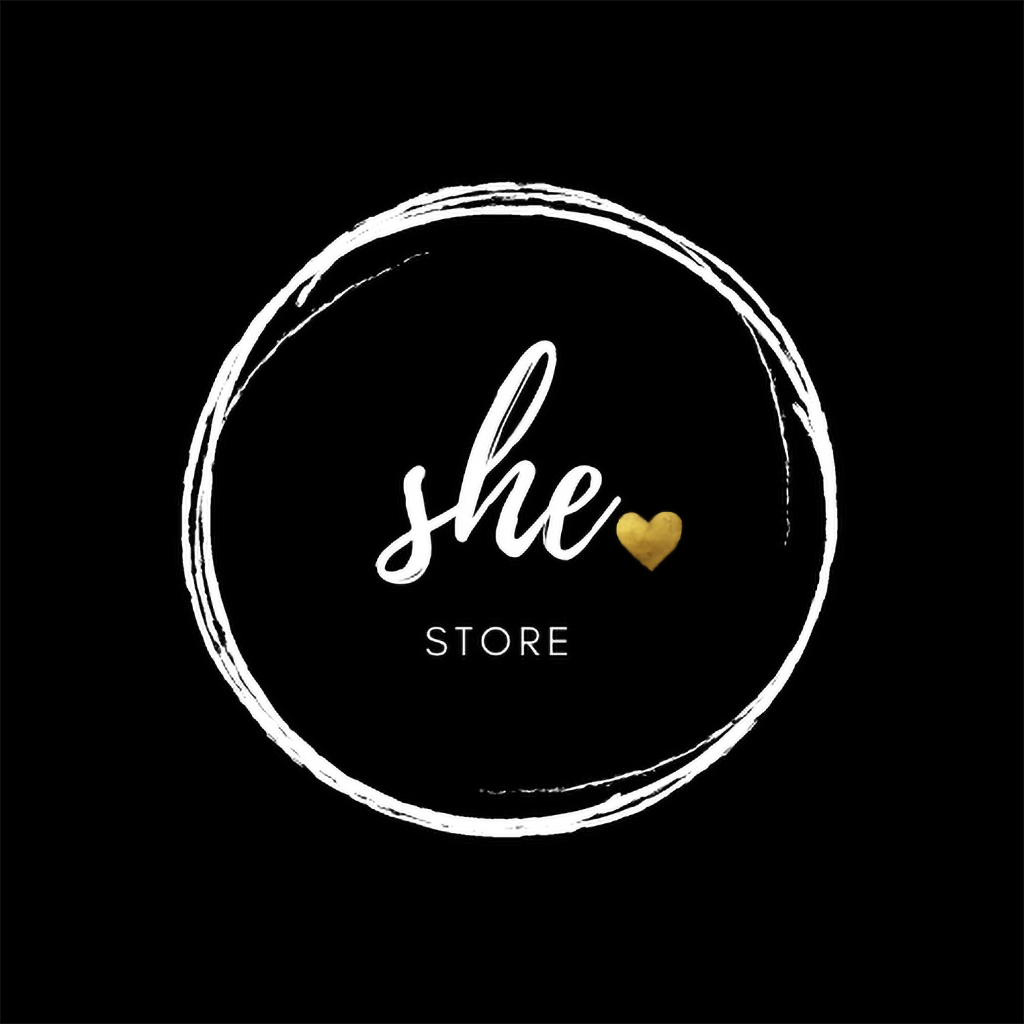Tips for adding realism and playing with light in SL photos
Great tutorial to give realism to your photos using light settings.

The 5 failures of Sansar®
As we all know, Sansar® is not giving the expected results of Linden Lab®, representing, to date, an expense and indeed not a company.
Anyone who has entered Sansar® at least once knows its limitations and has guessed the reasons for this failure that should have been understood by LL before embarking on this (shipwreck) adventure.
Moreover, the “initial secrecy from CIA” and the access allowed to a few creators, now makes everything even more curious … all this confidentiality for something that currently interests very few.
The reasons for the failure of Sansar® are very well known and already analyzed and can be summarized in this short list:
- Interactivity is missing: that is, you enter Sansar®, look … all very beautiful and realistic, but … then? You can not use the objects you see or interact physically with other users. The result? A boring environment. Without interactivity, Sansar® becomes a “museum” accessible in VR and nothing more.
- All is different from Second Life®: it is presumed that Sansar® is primarily addressed to SL® inhabitants (even if not only), but they have many difficulties in learning how to use and customize the 3D environment through experiences. Hardly anyone who has already struggled to understand SL® will invest further time in learning Sansar®.
- Ok, we admit that you do not care about interactivity and you have become an excellent creator also in Sansar® … but you’re alone. Oh yes, because in Sansar® there are very few users logged in and the maximum tip was 50 souls simultaneously present in the game (see article New World Notes).
- The avatars are ugly … but really really ugly. Ok, you do not want to be a fashion blogger, but let’s face it, logging in and seeing yourself as Fantozzi’s daughter is not gratifying. I am amazed that after a long time Sansar® has not yet managed to improve the appearance of the characters.
- Infinite loading times of experiences: finally enter Sansar® after a long login, visit an experience and unfortunately decide to change experience … I had never done it! As nothing you find yourself staring at the monitor waiting for signs of life and the loading bar starts to have a hypnotizing effect. Ok, I’m going to have a coffee.
And although Sansar® has some official experience of connecting Spielberg’s success, Ready Player One, released at the end of March, hyper-realistic virtual world traffic does not improve.
The opinions of those who have tried the VR platform are so unique that I have the impression that Sansar® will never succeed in raising its fate. I do not want to be defeatist, but I really do not see any future prospects. In any case, there are good experiences that deserve to be told so I will continue to talk about it, even if interactivity is still lacking.
I’m interested in knowing your opinions on Sansar®, so feel free to comment.
Among the many comments received on Social, Blog, and in-world, I was very impressed by the Vassay that you find at the bottom of the article. Her point of view (different from mine and probably from an active user of Sansar®), deserves to be highlighted to give more in-depth information on the VR implemented by the LL.
Let’s see point by point how Vassay thinks.
At point number 1, I say, lack of interactivity, or the possibility of interacting with objects.
Vassay: There is some level of interactivity already, and it will only be more varied with time. For now, there’s two dynamic games and a lot of interactive environments.
In point number 2 I say: everything is different from SL®, so it is challenging to learn again how to customize the environment.
Vassay: Time and time again, Sansar is not SL. It is an evolution of social space, and shouldn’t be compared. You don’t compare jets to cars, or rickshaws, right?
At point number 3 I say, there is little turnout, you enter the virtual world and you do not meet almost anyone.
Vassay: Seeing as Sansar is still in “Creative Beta,” that shouldn’t be a concern. Once again, let’s compare concurrent numbers with SL’s numbers in 2003, for example. Or did you think Sansar would magically skip 15 years and have 10 million users already?
At point number 4 I say: avatars are ugly, it would be essential to improve this aspect to attract more people.
Vassay: I partially agree with you, I don’t like avatars very much. But calling them ugly? Have you looked at other social spaces default avatars lately? Even SL default avatars look like piles of polygons. Sansar’s avatars at least resemble human beings, and if you took time to actually attend any of community meetings, you would see, that the avatars feel very much alive, especially when people are talking. Sansar has a great technology that recognizes phonemes and moves the face accordingly. The result is very emotional and quite convincingly moving face.
In point number 5 I say: the loading times of the experiences are too long.
Vassay: Again, partially agree. Yes, it takes time to load an experience. But then again, there are different experiences. Some load almost instantly, some take longer to load. If you want a comparison with oh so beloved SL, just tell me honestly, how much time does it take to FULLY load some big, region, like InSilico? Sansar is deliberately loading all the resources before putting user inside so that they would have the best experience. Yes, sometimes you have to wait. But if you want to see a detailed experience, that is bigger than a room, there is no way in the world it would load quickly.
In our dialogue, I point out to her that there has not been a mass migration from SL® to Sansar® and she answers me that way.
Vassay: Concerning SL population migration, and a small number of new users – it’s two-fold.
First, most SL users run it on 10+year old machines, and they don’t have the ability/desire to upgrade just for prettier graphics. They feel great where they are now and see no point in moving somewhere else. Add the fear of innovations, fear of losing contacts, and most important (but silly, if thought through), fear of losing inventory. These are most prominent reasons that keep people in SL.
Second, my understanding is that LL envisions completely different age and interest groups for SL and Sansar. SL is mostly populated by mature people, most well over 40, some as high as 90+. Sansar, on the other hand, is a shiny VR world, targeted for a younger audience. My guess would be 20-40 for the target demographic, maybe with even younger users down the line.
What I’m trying to say, Sansar is a different product, posed for a different group of people. Adoption will be of course slower, because of a different time, market saturation, user age and hardware requirements.
I note to Vassay that LL also has its responsibilities for creating unfulfilled expectations. For example, in the beginning, Sansar® has been promoted as the future of mobile phone VR, a perspective that has proved to be challenging to implement. Furthermore, LL was not clear from the beginning about the role to be given to Sansar®, inviting the creators of Second Life® to enter to give life to projects. If we say we do not have to compare Sansar® with Second Life®, that’s fine, but that should have been clear from the beginning.
Vassay: Yes, a lot of disappointment comes from unmet expectations. Partly it is LL’s fault, partly – people’s. We will see how it will all untangle in the future, but I hope LL will be more clear about WHAT exactly Sansar is supposed to be so that people wouldn’t get disappointed once they come inside.
Thanks, Vassay, your support has been precious.
ITALIANO
Come tutti bene sappiamo, Sansar® non sta dando i risultati sperati da Linden Lab®, rappresentando, ad oggi, una spesa e non certo un’impresa.
Chiunque sia entrato in Sansar® almeno una volta ne conosce i grossi limiti e ha intuito i motivi di questo insuccesso che avrebbero dovuto essere compresi da LL prima di imbarcarsi in questa (naufragante) avventura.
Oltretutto, la “segretezza iniziale da CIA” e l’accesso consentito a pochi creatori, rende ora il tutto ancora più curioso… tutta questa riservatezza per qualcosa che attualmente interessa pochissimi.
I motivi dell’insuccesso di Sansar® sono molto ben conosciuti e già analizzati e possono essere sintetizzati in questo breve elenco:
- Manca l’interattività: ovvero, entri in Sansar®, guardi… tutto molto bello e realistico, ma… poi? Non puoi usare gli oggetti che vedi né interagire fisicamente con gli altri utenti. Il risultato? Un ambiente noioso. Senza interattività Sansar® diventa un “museo” fruibile in VR e nulla di più.
- Tutto è diverso da Second Life®: si presume che Sansar® sia indirizzato in primo luogo agli abitanti di SL® (anche se non solo) i quali però incontrano molte difficoltà nell’apprendere come utilizzare e personalizzare l’ambiente 3D attraverso le esperienze. Difficilmente chi ha già faticato molto a comprendere SL® investirà ulteriore tempo nell’apprendere Sansar®.
- Ok, ammettiamo che non ti interessa l’interattività e sei diventato un eccellente creatore anche in Sansar®… però sei solo. Eh si, perché in Sansar® ci sono pochissimi utenti loggati e la punta massima è stata di 50 anime contemporaneamente presenti nel gioco (vedi articolo New World Notes).
- Gli avatar sono brutti… ma davvero davvero brutti. Ok, non vuoi fare la fashion blogger, però ammettiamolo, loggare e vedersi come la figlia di Fantozzi non è gratificante. Mi stupisco che dopo tanto tempo Sansar® non sia ancora riuscita a migliorare l’aspetto dei characters.
- Infiniti tempi di caricamento delle esperienze: finalmente entri in Sansar® dopo un lungo login, visiti un’esperienza e malauguratamente decidi di cambiare esperienza… non l’avessi mai fatto! Come niente ti ritrovi a fissare il monitor in attesa di segni di vita e la barra di caricamento inizia ad avere un effetto ipnotizzante. Ok, vado a farmi un caffè.
E, nonostante Sansar® abbia delle esperienze ufficiali di collegamento con il successo di Spielberg, Ready Player One, uscito alla fine di marzo, il traffico del mondo virtuale iper-realistico non migliora.
Le opinioni di chi ha provato la piattaforma di VR sono talmente univoche che ho l’impressione che Sansar® non riuscirà mai a sollevare le sue sorti. Non voglio essere disfattista, ma davvero non vedo prospettive future. A ogni modo, ci sono belle esperienze che meritano di essere raccontate, quindi continuerò a parlarne, anche se manca ancora l’interattività.
Mi interessa conoscere le tue opinioni su Sansar®, quindi sentiti libero di commentare.
Tra i molti commenti ricevuti sui Social, sul Blog e in-world, mi ha molto colpito quello di Vassay che trovate in fondo all’articolo. Il suo punto di vista (diverso dal mio e probabilmente da utente attivo di Sansar®), merita di essere messo in risalto per dare un’informazione più approfondita sulla VR implementata dalla LL.
Vediamo punto per punto come Vassay la pensa.
Al punto numero 1 io dico, manca l’interattività, ovvero la possibilità di interagire con gli oggetti.
Vassay: Esiste già un certo livello di interattività e sarà solo più varia nel tempo. Per ora ci sono due giochi dinamici e molti ambienti interattivi.
Al punto numero 2 io dico: tutto è diverso da SL®, quindi è arduo apprendere nuovamente come personalizzare l’ambiente.
Vassay: Poco per volta, Sansar non è SL. È un’evoluzione dello spazio sociale e non dovrebbe essere confrontato.
Al punto numero 3 io dico, c’è poca affluenza, entri nel mondo virtuale e non incontri quasi nessuno.
Vassay: Visto che Sansar è ancora in “Beta”, non dovrebbe essere un problema. Ancora una volta, confrontiamo i numeri concorrenti con i numeri di SL nel 2003, ad esempio. O pensavi che Sansar avrebbe magicamente saltato 15 anni e avrebbe già avuto 10 milioni di utenti?
Al punto numero 4 io dico: gli avatars sono brutti, sarebbe importante migliorare questo aspetto per attirare più persone.
Vassay: Sono parzialmente d’accordo con te, non mi piacciono molto gli avatar. Ma brutti? Hai guardato negli altri avatar social di default ultimamente? Anche gli avatar di default di SL assomigliano a pile di poligoni. Gli avatar di Sansar assomigliano almeno agli esseri umani, e se prendi il tempo di partecipare effettivamente a qualsiasi riunione della comunità, vedrai che gli avatar si sentono molto vivi, specialmente quando le persone parlano. Sansar ha una grande tecnologia che riconosce i fonemi e sposta la faccia di conseguenza. Il risultato è una faccia molto emotiva e abbastanza convincente.
Al punto numero 5 io dico: troppo lunghi i tempi di caricamento delle esperienze.
Vassay: Di nuovo, parzialmente d’accordo. Sì, ci vuole tempo per caricare un’esperienza. Ma poi di nuovo, ci sono esperienze diverse. Alcuni caricano quasi istantaneamente, altri richiedono più tempo per essere caricati. Se vuoi un confronto con il così amato SL, dimmi solo onestamente, quanto tempo ci vuole per caricare COMPLETAMENTE alcune grandi regioni come InSilico? Sansar sta caricando deliberatamente tutte le risorse prima di mettere l’utente all’interno, in modo che possano avere la migliore esperienza. Sì, a volte devi aspettare. Ma se vuoi vedere un’esperienza dettagliata, che è più grande di una stanza, non c’è modo di caricarlo rapidamente.
Nel nostro dialogo, le faccio notare che non c’è stata una migrazione di massa da SL® a Sansar® e lei mi risponde così.

The contradictory data of Second Life®
Today I had the pleasure of reading a couple of interesting articles on the blog “New World Notes” and that I would like to share. In the first article Hamlet, inspired by a comment published by Chic Aeon on his blog, analyzes a phenomenon with important implications, especially in the long run: the death (as a natural fact) of people skilled with SL.
This is a regular event and if we want to be taken for granted, but it will produce, especially in the future, essential consequences that could force Linden Lab® to change the virtual environment to make it more usable by the new generations.
I’ll explain. SL®, as we all know, is not easy to learn and requires a good dose of patience and a desire to improve. The hoped-for results arrive proportionally to the commitment one puts into it. For example, learning to use Blender from scratch 0 is not a “walk,” but also less demanding hobbies such as photography, require a good deal of patience and commitment to using Photoshop and other graphics programs. The people of my generation (I am 43 years old) and beyond are used to “sweat the successes” and to commit to succeed is a universal fact.
As for the new generations, however, except for some, it has been seen that patience is lacking, so today’s kids want to get results right away, or else they give up.
SL®, as mentioned, is not a simple platform to learn and this difficulty of the MMO contrasts with the “everything and immediately” of modern youth … so what are the possible future scenarios?
Surely one possibility is that Linden Lab® changes strategy and decides to adapt to this generational change by simplifying the platform (and making it even cheaper, because the job instability that characterizes young people today does not allow them to spend large amounts in virtual fees).
If on the one hand there is this death of historical people in SL®, on the other side the economic revenues of the MMO are astonishing, as highlighted in a second article by Hamlet. Some numbers to better understand the current financial situation:
PAID TO SL® CREATORS IN 2017: $ 68 MILLION
EARN OF LINDEN LAB®: 65/70 MILLION $ YEAR
So, we can say that the creators of SL® (as a whole) collect as much as the company … not bad, eh?
From the graphic that follows, which Linden Lab® has given to Hamlet, you can also see which sectors have the most significant luck on the platform:
NWN Graphic
All this comforting data, out of tune with another data, however, is worrying: the number of monthly users who live the platform for 90% of the total hours, which settles around 150,000 users.
If this data is compared with two others, i.e., the total number of accounts created so far (57,000,000) and with the number of new monthly registrations (350,000), the above data remains a mystery.
In short, a prosperous virtual world in which the fixed users that are more present are 150,000 … strange, is not it?
I would like to know your opinion, feel free to comment to let me know what you think.
ITALIANO
Oggi ho avuto il piacere di leggere un paio di articoli molto interessanti sul blog “New World Notes” e che vorrei condividere. Nel primo articolo Hamlet, prendendo spunto da un commento pubblicato da Chic Aeon sul suo blog, analizza un fenomeno dai risvolti importanti, soprattutto nel lungo periodo: la morte (come fatto naturale) di persone esperte di SL.
Si tratta di un avvenimento del tutto normale e se vogliamo scontato, che però produrrà, soprattutto nel futuro, importanti conseguenze che potrebbero costringere Linden Lab® a cambiare l’ambiente virtuale per renderlo più fruibile dalle nuove generazioni.
Mi spiego meglio. SL®, come ben sappiamo, non è semplice da imparare e richiede una buona dose di pazienza e voglia di migliorarsi. I risultati sperati arrivano proporzionalmente all’impegno che ci si mette. Ad esempio, imparare a usare Blender partendo da zero 0 non è una “passeggiata”, ma anche hobby meno impegnativi come la fotografia, richiedono una buona dose di pazienza e impegno nell’uso di Photoshop e altri programmi di grafica. Le persone della mia generazione (ho 43 anni) e oltre sono abituate a “sudarsi i successi” e impegnarsi per riuscire è un fatto normale.
Per quanto riguarda le nuove generazioni, invece, fatta eccezione per alcuni, si è visto in concreto che manca la pazienza, per cui i ragazzi di oggi vogliono ottenere risultati subito, sennò mollano.
SL®, come detto, non è una piattaforma semplice da imparare e questa difficoltà del MMO contrasta con il “tutto e subito” della gioventù moderna… quindi quali sono i possibili futuri scenari?
Sicuramente una eventualità è che Linden Lab® cambi strategia e decida di adattarsi a questo cambiamento generazionale semplificando la piattaforma (e rendendola anche più economica, perchè l’instabilità lavorativa che caratterizza i giovani di oggi non permette loro di spendere grandi cifre in tasse virtuali).
Se da un lato c’è questa moria di persone storiche in SL®, dall’altro le entrate economiche del MMO sono strabilianti, come evidenziato in un secondo articolo di Hamlet. Alcuni numeri per meglio comprendere la situazione economica attuale:
PAGATI AI CREATORI IN SL® NEL 2017 : 68 MILIONI DI $
GUADAGNI DI LINDEN LAB® : 65/70 MILIONI DI $ L’ANNO
Quindi, possiamo affermare che i creatori di SL® (nel loro complesso) incassano quanto l’azienda… non male, eh?
Dalla grafica che segue, che Linden Lab® ha dato ad Hamlet, si possono vedere anche quali sono i settori che hanno maggiore fortuna all’interno della piattaforma:
NWN Graphic
Tutti questi dati confortanti, stonano con un altro dato che, invece, è preoccupante: il numero di utenti mensili che vive la piattaforma per il 90% delle ore complessive, che si assesta intorno ai 150.000 utenti fissi.
Se questo dato viene confrontato con altri due, ovvero il numero totale di accounts creati finora (57.000.000) e con il numero di nuovi registrati mensili (350.000) il dato di cui sopra resta un mistero.
Insomma, un mondo virtuale ricchissimo in cui gli utenti fissi che sono maggiormente presenti sono 150.000… strano, vero?
Mi piacerebbe conoscere la tua opinione, sentiti libero di commentare per farmi sapere cosa ne pensi.
“Out Of Here”, the recent performance at the Nitro Globus in Second Life®
Pain unites, this is a thought that I have always held true. It accompanies us throughout life, in a flow of events that alternate with each other making us taste the bittersweet nature of our existence.
Pain is the central theme of Nevereux‘s art exhibition, entitled “Out of here,” hosted by the Nitroglobus Roof Art Gallery (whose art curator and owner at the same time is Dido Haas).
The Nitroglobus Roof Art Gallery usually hosts an artistic black and white image, but in this case, it makes a pleasant exception. The colors of the pictures, to be honest, are not turned on, on the contrary, they are very discreet, almost timidly hinted at.
As anticipated, Nevereaux faces the problematic theme of suffering that accompanies our existence, in a flow of events sometimes incomprehensible. The technique she uses is symbolism, as a symbolic message is present in each of her works, whether the image is surreal or traditional. For example, the splendid image titled “Adieux Beta version,” where the only color element is the red poppies, it seems to symbolize the contrast between the mood of the person sitting on the bench and the joy of those spring flowers (which seem make fun of their sad traveler’s liveliness). Or the image entitled “Every song is a lament” that well symbolizes the desire to escape, to escape from a painful and senseless existence.
As anticipated by the same Nevereux, in this performance there is no mention of “great pains”, the theme of a “normal existence” is tackled with its daily difficulty and the painful senselessness of the passing of time and, with it, of events and people dear to us.
I particularly appreciated the images that have a touch of surreality, being I lover of this artistic style and creating it in my turn. The surreal well marries with symbolism and Nevereux effectively succeeds in her communicative intent. Just think, for example, of the image entitled “The vast emptiness,” with the mirror instead of the head reflecting a path with an uncertain outcome, with blurred contours. That’s life. Even the image entitled “Shipwrecked,” reflects very well that “get lost in the sea of events” that happens to everyone, sooner or later. It is not drowning, it is an inability to “float,” you ” pull strings” of existence that becomes less and less understandable with the passing (inexorable) of time. And again, the image titled “Looking back” symbolizes with care the turning back of the look of the weary traveler, almost wondering if there really existed that joyous past, that idyllic childhood.
Here we do not talk about significant traumas, we do not face tragedies. There is the talk of a regular flow of events, with its daily difficulties, it’s no moments, its losses, etc. It is not about “hard mortal blows” inflicted by life, but the “slow agony” that is our existence.
Naturally, life is also a pleasure. In this context, Nevereux deals with the theme of pain and suffering.
To conclude with a positive message, I would say that suffering, pain, are the other side of the same coin of love; Padre Pio rightly noted that those who have significantly suffered have also loved much.
Congratulations to Nevereux for this engaging performance and to Dido Haas for another artistic success.
References
ITALIANO
Il dolore unisce, questo è un pensiero che ho sempre ritenuto vero. Ci accompagna tutta la vita, in uno scorrere di eventi che si alternano fra loro facendoci assaporare la natura agrodolce della nostra esistenza.
Il dolore è il tema principale della esibizione artistica di Nevereux, dal titolo “Out of here” (lett. “fuori di qui”) ospitata dalla Nitroglobus Roof Art Gallery (il cui art curator e owner è Dido Haas).
La Nitroglobus Roof Art Gallery di solito ospita immagini artistiche in bianco e nero, ma in questo caso fa una piacevole eccezione. I colori delle immagini, per la verità, non sono accesi, anzi, sono molto discreti, quasi timidamente accennati.
Come anticipato, Nevereaux affronta il difficile tema della sofferenza che accompagna la nostra esistenza, in uno scorrere di eventi a volte incomprensibili. La tecnica che usa è il simbolismo, in quanto un messaggio simbolico è presente in ognuno dei suoi lavori, sia che l’immagine sia surreale che tradizionale. Ad esempio, la spendida immagine dal titolo “Adieux. Beta version“, dove l’unico elemento di colore sono i papaveri rossi, sembra proprio simboleggiare il contrasto tra lo stato d’animo della persona seduta sulla panchina e l’allegria di quei fiori primaverili (che paiono prendersi gioco con la loro vivacità del viandante triste). Oppure l’immagine dal titolo “Every song is a lament” che ben simboleggia la voglia di evadere, di scappare da una esistenza dolorosa e insensata.
Come anticipato dalla medesima Nevereux, in questa esibizione non si parla di “grandi dolori”, si affronta il tema di una “esistenza normale” con la sua quotidiana difficoltà e la dolorosa insensatezza dello scorrere del tempo e, con lui, degli eventi e persone a noi care.
Ho apprezzato in modo particolare le immagini che hanno un tocco di surrealità, essendo io amante di questo stile artistico e creandolo a mia volta. Il surreale bene si sposa col simbolismo e Nevereux riesce nel suo intento comunicativo in modo efficace. Basta pensare, ad esempio, all’immagine dal titolo “The vast emptiness“, con lo specchio al posto della testa che riflette un percorso dall’esito incerto, dai contorni sfumati. Così è la vita. Anche l’immagine dal titolo “Shipwrecked“, riflette egregiamente quel “perdersi nel mare degli eventi” che capita a tutti, prima o poi. Non è un annegare, è un’incapacità di “stare a galla”, ti “tirare le fila” di una esistenza che diventa sempre meno comprensibile col passare (inesorabile) del tempo. E ancora, l’immagine dal titolo “Looking back” simboleggia con cura il volgere indietro dello sguardo del viandante stanco, quasi a chiedersi se realmente sia esistito quel passato gioioso, quella infanzia serena.
Qui non si parla di grandi traumi, non si affrontano tragedie. Si parla di uno scorrere normale degli eventi, con le sue difficoltà quotidiane, i suoi momenti no, i suoi lutti etc. Non si tratta di “duri colpi mortali” inflitti dalla vita, ma di quella “lenta agonia” che è la nostra esistenza.
Naturalmente la vita è, anche, piacere. In questo contesto Nevereux affronta però il tema del dolore, della sofferenza.
Per concludere con un messaggio positivo, direi che la sofferenza, il dolore, sono l’altra faccia della stessa medaglia dell’amore; diceva giustamente Padre Pio che chi ha molto sofferto ha, anche, molto amato.
Complimenti a Nevereux per questa coinvolgente esibizione e a Dido Haas per un altro successo artistico.
Riferimenti
Cake in Second Life®, a sim designed for artists
Some lands are born with the needs of the artists in mind, and “Cake” is one of them.
Created by AJ (anyajurelle), Cake (located on a parcel of Cerveza Island) offers photographers, bloggers, and vloggers plenty of ideas for narratives, images, and recordings. In a brightly colored setting, you are greeted by a mantle of spring lawn embellished with flowers of all colors.
Caravans that seem to come out of the ’60s, balloons and reassuring statues help to make the “climate” familiar and make the visitor feel welcome and at ease.
The site occupies an area of 8192 square meters, but it seems much more extensive because the objects are well distributed and, being Cerveza Island a full sim, the number of prims available make it possible to obtain an excellent level of detail.
References
Windlight Settings Recommended: Fairy Dark Blue (Paulina)
ITALIANO
Ci sono land che nascono con le esigenze degli artisti in mente e “Cake” è una di queste.
Creata da AJ (anyajurelle), Cake (ubicata presso una parcella di Cerveza Island) offre a fotografi, blogger e vlogger moltissimi spunti per narrazioni, immagini e registrazioni. In un ambientazione dai colori vivaci, si viene accolti da un manto di prato primaverile impreziosito da fiori di ogni colore.
Caravan che sembrano usciti dagli anni ’60, palloncini e statue rassicuranti contribuiscono a rendere il “clima” familiare e a far sentire il visitatore il benvenuto e a suo agio.
La località occupa un’area di 8192 mq, ma sembra molto più estesa perché gli oggetti sono ben distribuiti ed, essendo Cerveza Island una full sim, il numero di prims messi a disposizione permettono di ottenere un ottimo livello di dettaglio.
Riferimenti
Windlight Settings Raccomandato: Fairy Dark Blue (Paulina)







